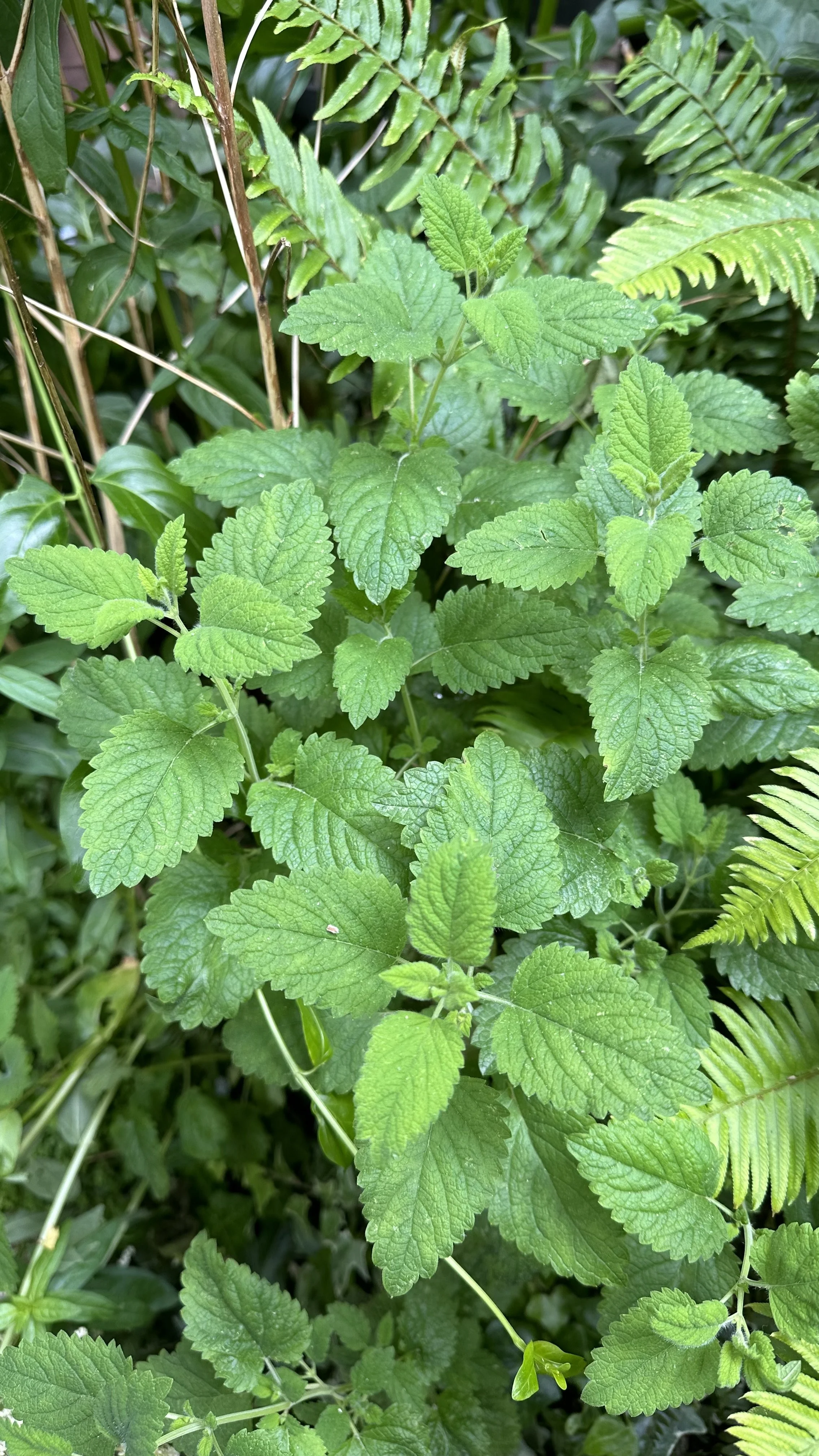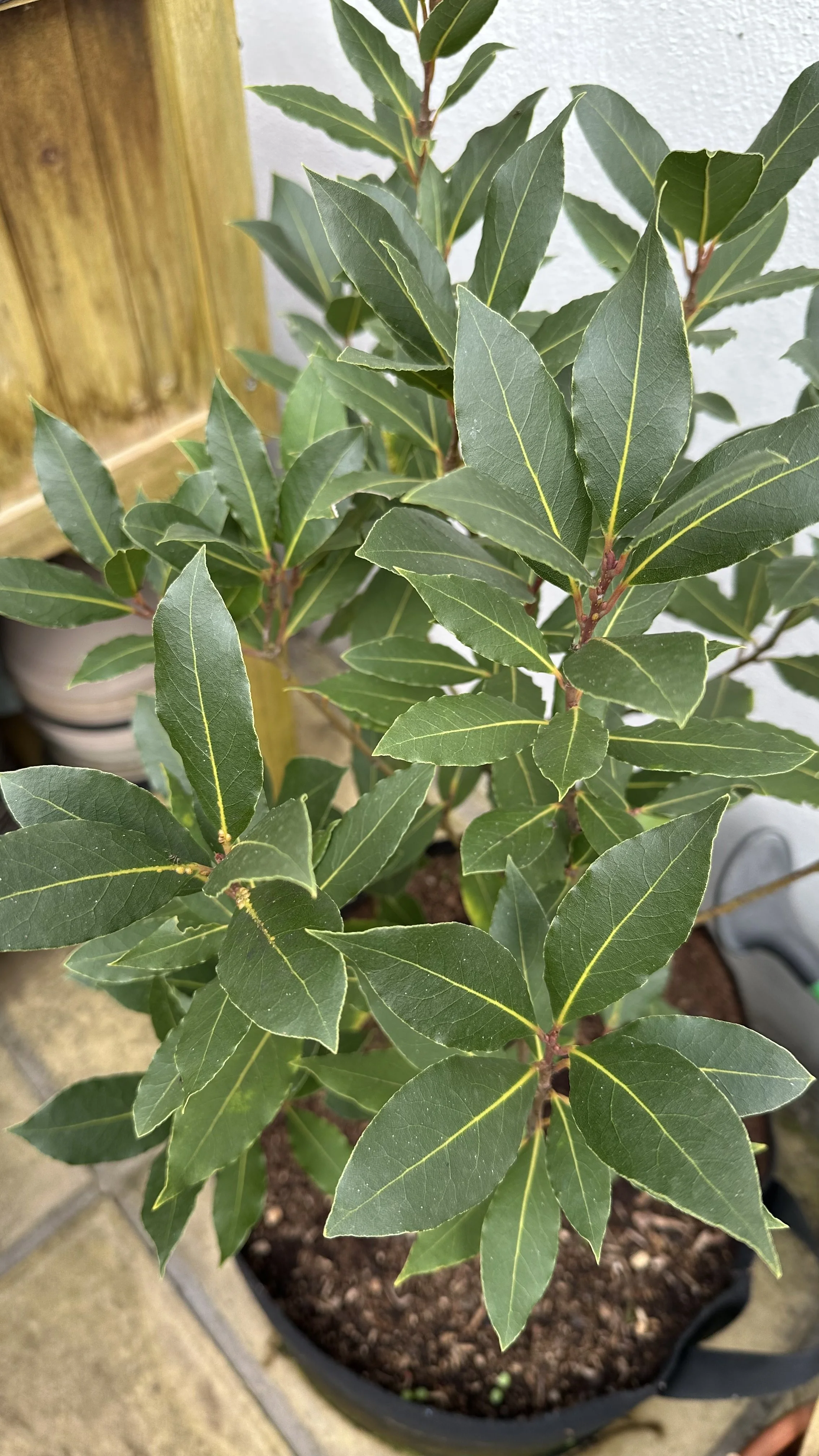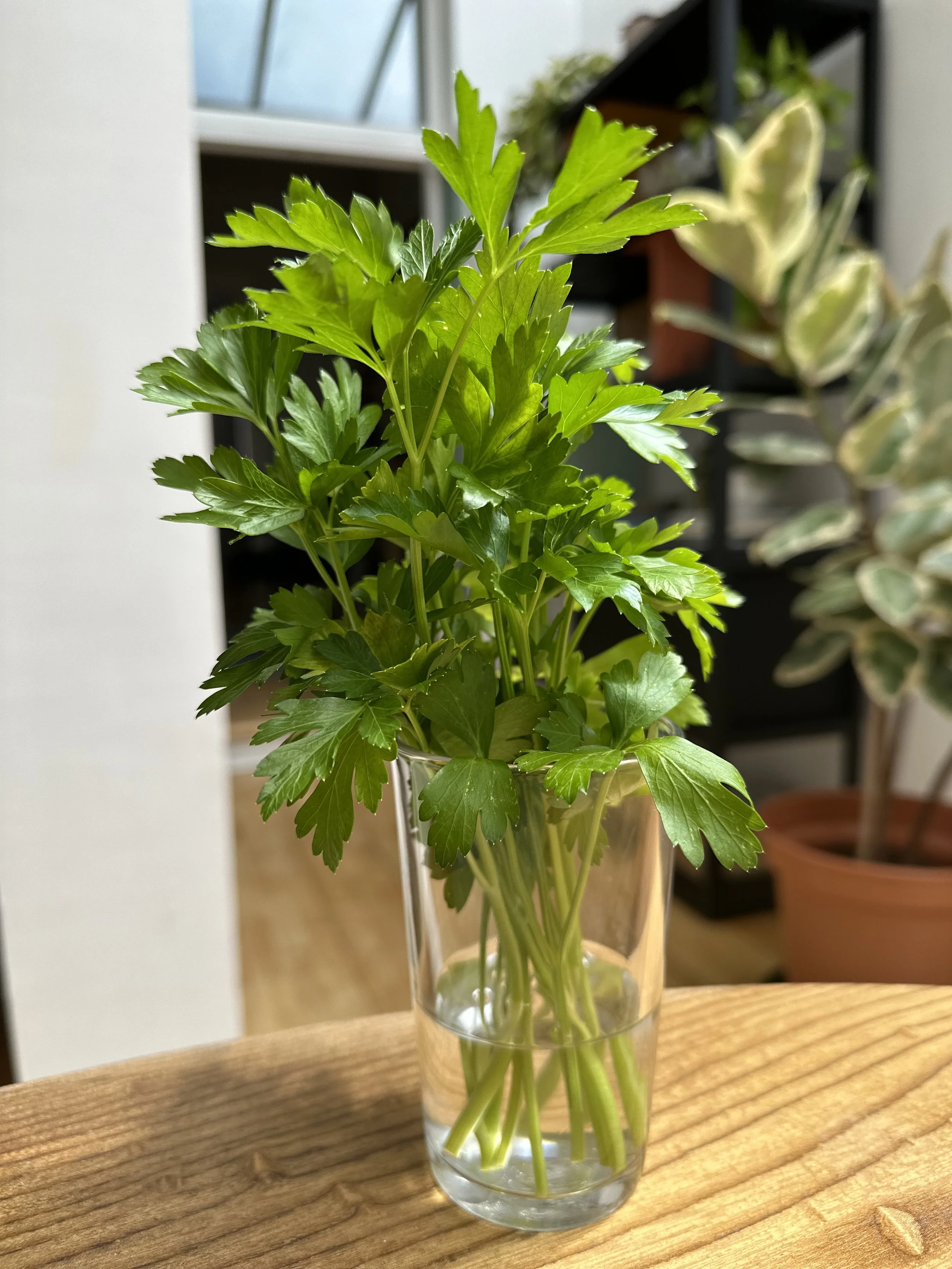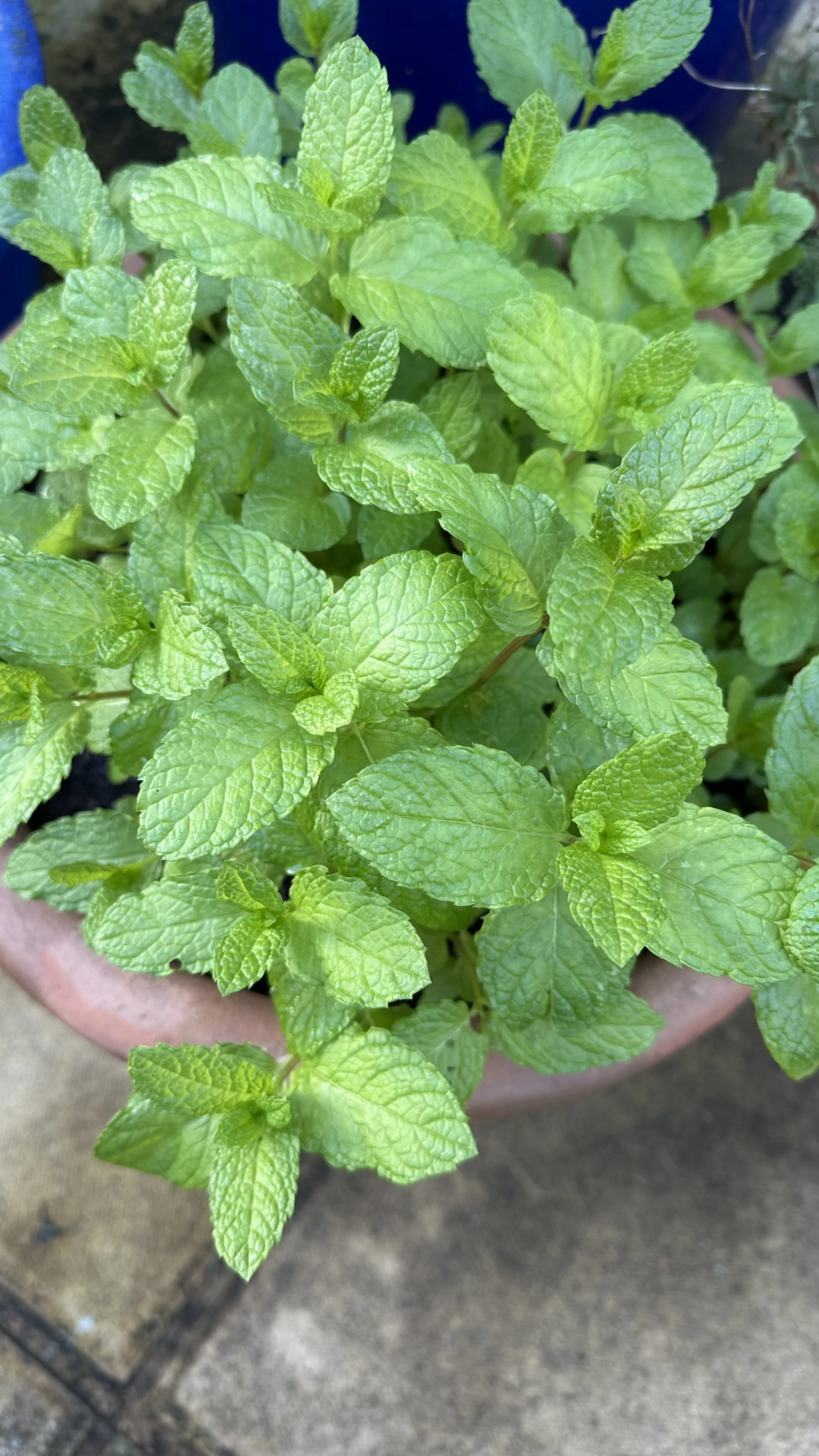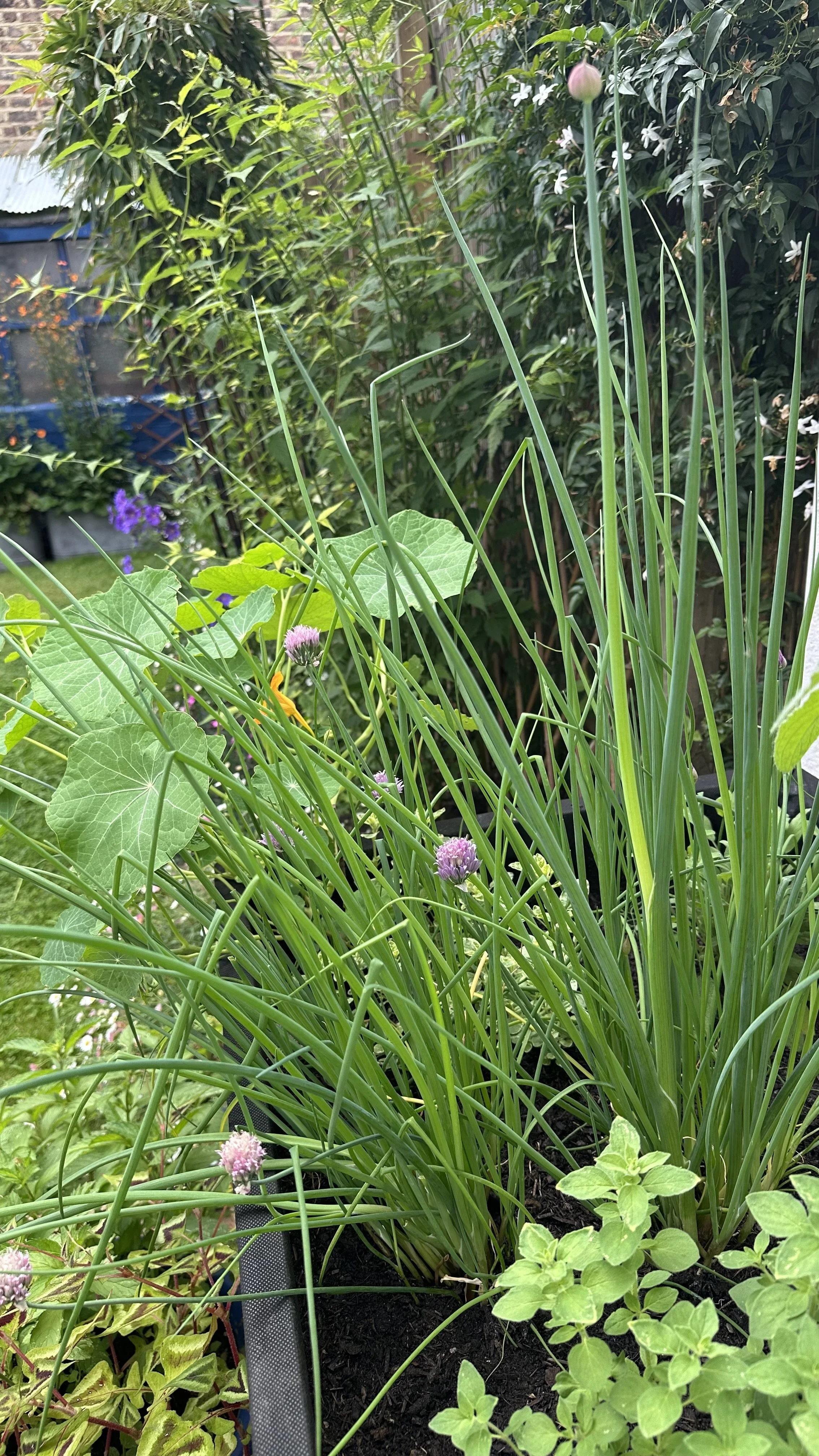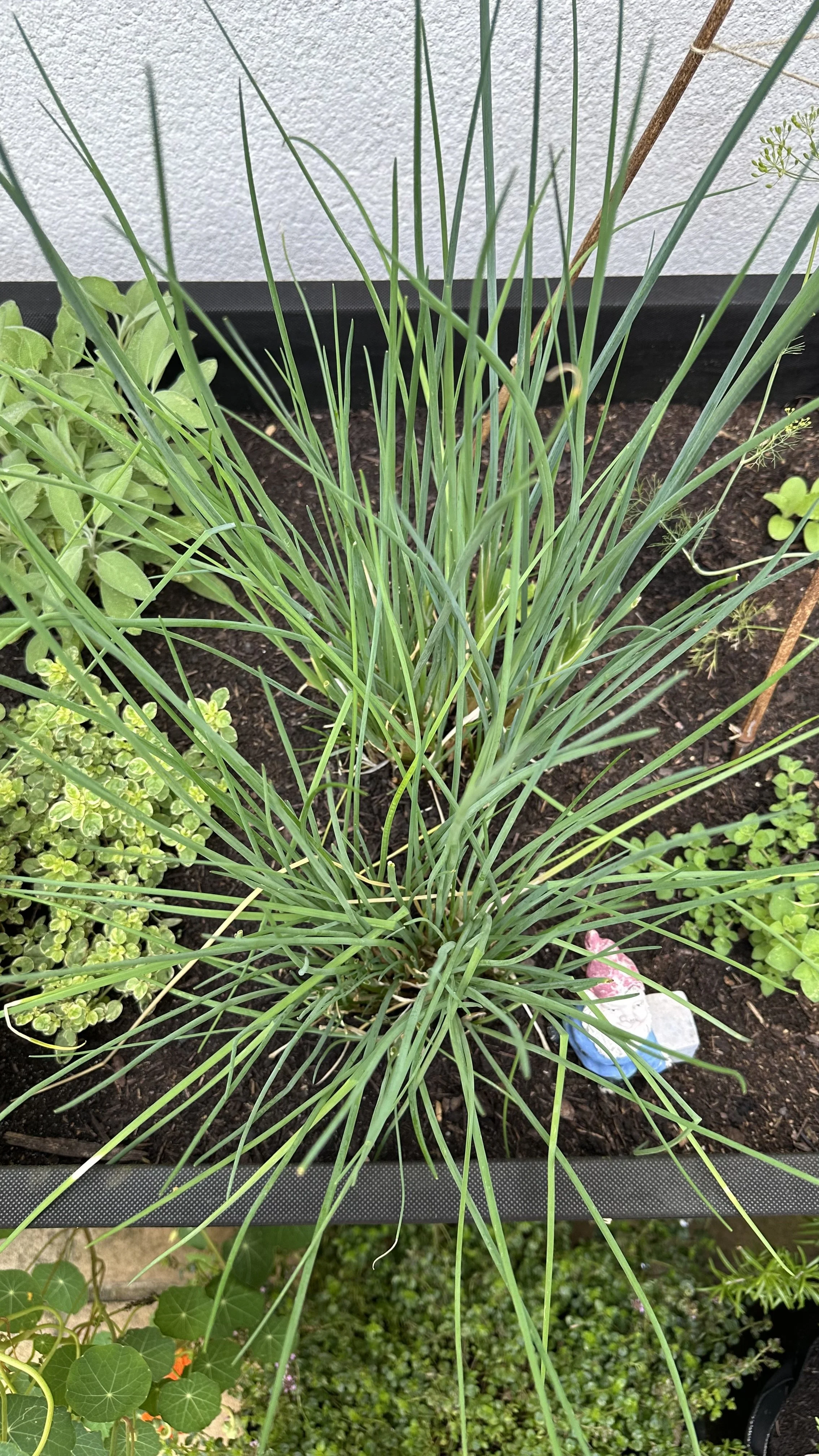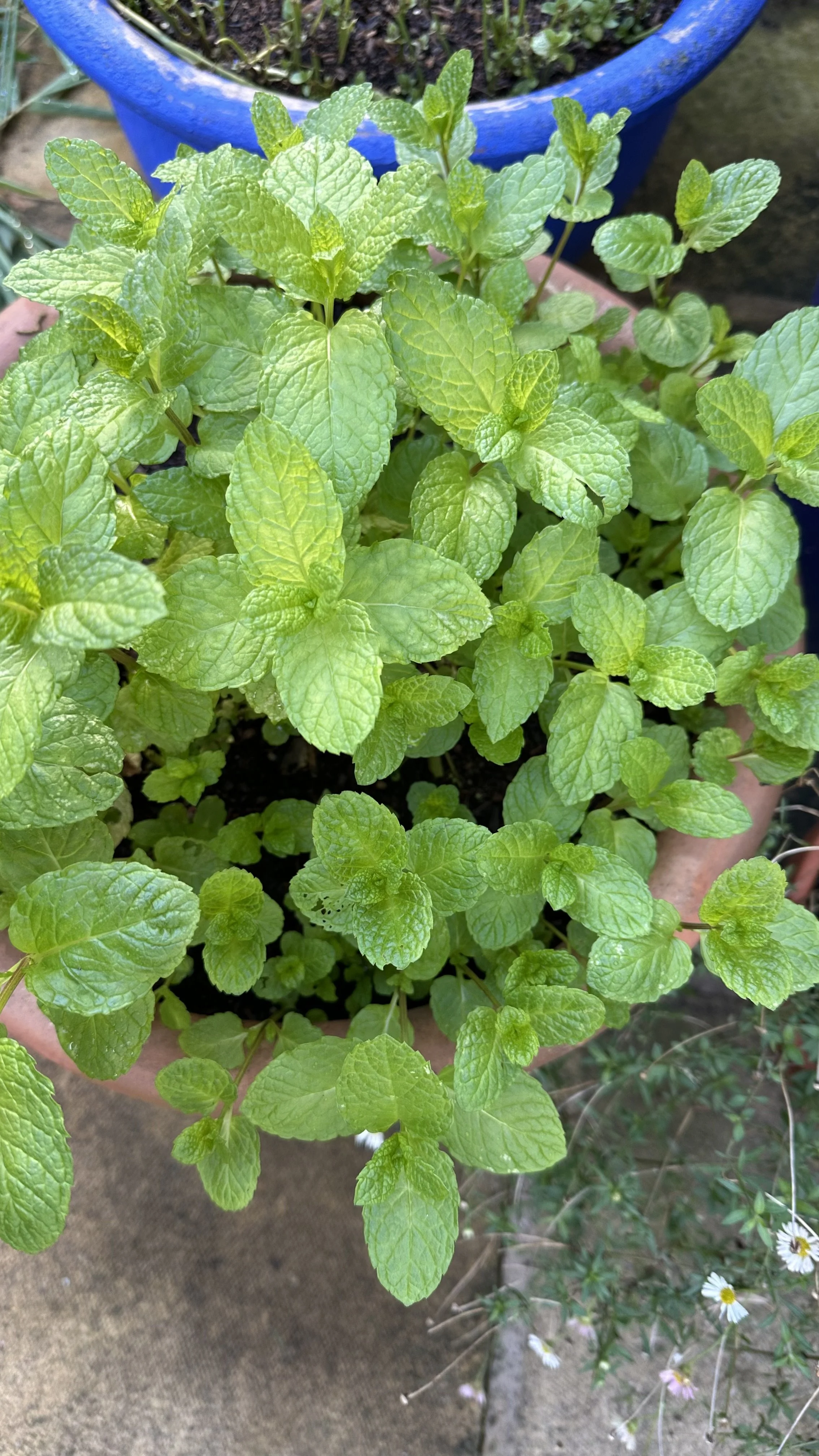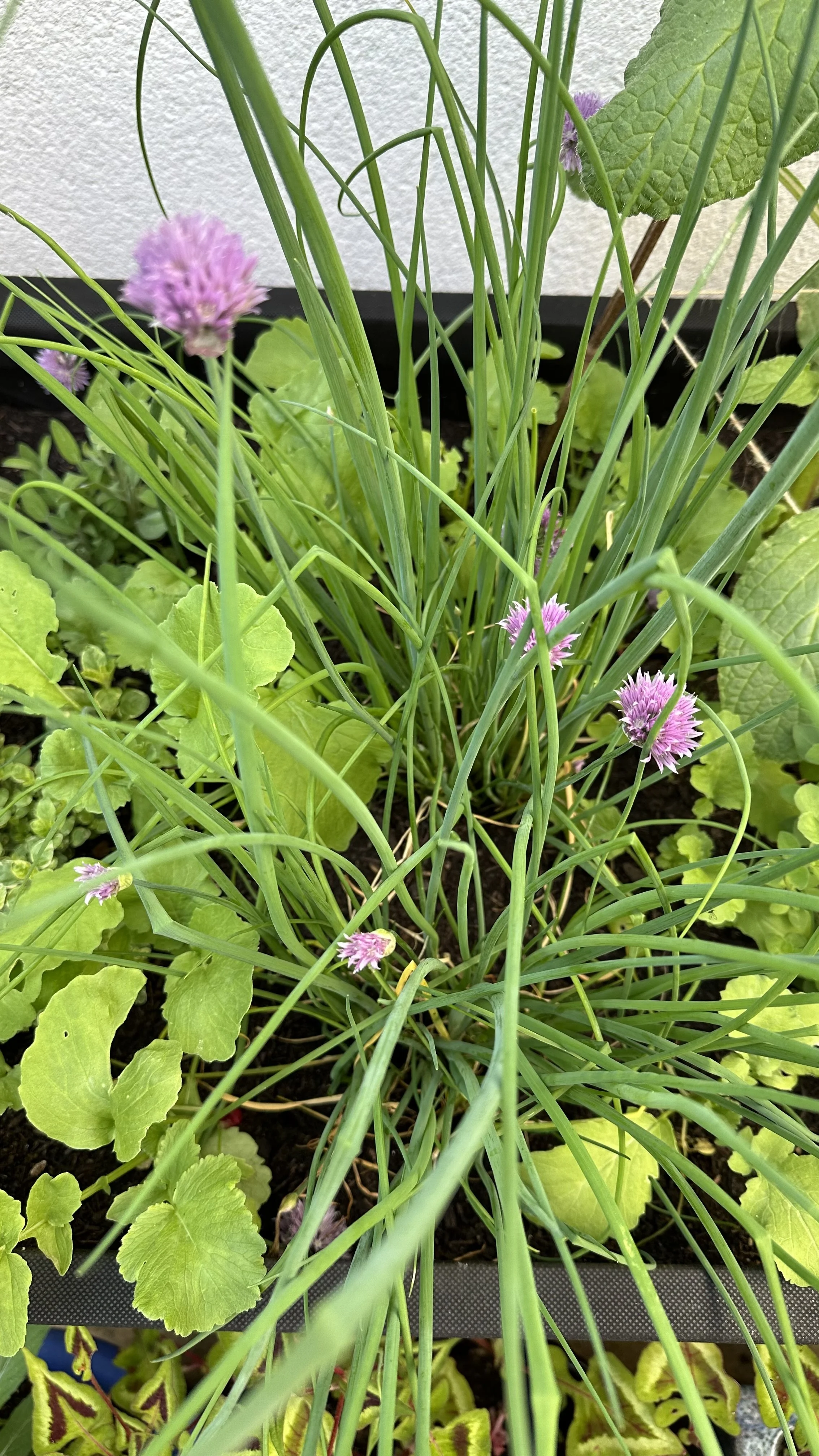Herbs That Actually Grow Well in Shade
This article has links to products that I may make commission from.
In the world of shade gardening, the absence of full sun opens the door to a diverse world of herb cultivation.
This guide delves into the fascinating variety of herbs that thrive in shaded areas, offering a green sanctuary even in the less sunlit corners of your garden.
From the culinary delights of parsley and mint to the soothing properties of lemon balm, we explore the magic of shade-loving herbs.
Whether you're an experienced gardener or a beginner looking to make the most of a shady nook, this guide provides valuable insights into creating a lush, productive herb garden that flourishes in the gentle embrace of shade.
Join us as we uncover the secrets of these versatile plants, transforming shaded spaces into vibrant havens of flavor and fragrance.
To learn more about herb gardening, check out my guides:
How to Start a Raised Bed Herb Garden
The Best Shade Loving Herbs
Shade-loving herbs are a treasure trove of flavors and benefits, ideal for garden spaces with limited sunlight.
Each of these herbs has unique qualities that make them a valuable addition to any shady garden.
Lemon Balm (Melissa officinalis)
Characteristics:
Lemon balm is a perennial herb with a bushy growth habit.
Its heart-shaped, serrated leaves emit a pleasant lemon scent when bruised.
It can grow up to 24 inches tall and tends to spread, making it great as a ground cover in shady areas.
Culinary Uses:
Its citrus-flavored leaves are perfect for flavoring teas, desserts, and salads.
Lemon balm can also be used to make a refreshing lemonade or as a garnish for summer drinks.
Medicinal Benefits:
It’s known for its calming effects and is often used in herbal remedies to help with anxiety, insomnia, and indigestion.
Lemon balm also contains antiviral properties and can be applied topically in balms or salves to soothe skin irritations.
Here are my favorite lemon balm plants:
For more herb growing tips, check out my guide:
Bay Laurel (Laurus nobilis)
Characteristics:
Bay laurel is an evergreen shrub or small tree with glossy, dark green leaves.
It's slow-growing but can reach heights of 20 feet if not pruned, making it an ideal backdrop for a shaded garden.
Culinary Uses:
The leaves are a common seasoning in cooking, used in soups, stews, and braises.
They impart a subtle, slightly floral flavor to dishes and are usually removed before serving.
Medicinal Benefits:
Bay leaves have antimicrobial and antioxidant properties.
They have been traditionally used to aid digestion, reduce joint pain, and alleviate respiratory conditions.
Here are my favorite bay laurel plants to buy:
To learn more about bay, check out my guide:
Parsley (Petroselinum crispum)
Characteristics:
Parsley is a bright green, biennial herb with either flat or curly leaves, depending on the variety.
It prefers partial shade, where it can produce lush, tender leaves.
Also check out my guide: Parsley's Perfect Partners: Companion Planting for Parsley.
Culinary Uses:
Widely used as a garnish, parsley also adds a fresh, slightly peppery flavor to dishes.
It's a staple in salads, soups, and sauces and is an essential ingredient in many Middle Eastern and European cuisines.
Medicinal Benefits:
Parsley is rich in vitamins A, C, and K and contains antioxidants that support immune health.
It’s also known for its diuretic properties and can aid in kidney health.
Here are my favorite parsley plants:
Mint (Mentha spp.)
Characteristics:
Mint is a vigorous perennial with a spreading growth habit.
It comes in various types, each with distinct flavors, such as peppermint and spearmint. Mint thrives in moist, shaded areas.
Also check out my guide: Growing Mint from Cuttings: Easy Step-by-Step Guide.
Culinary Uses:
Mint is versatile in the kitchen, used in drinks, desserts, savory dishes, and sauces.
It's particularly refreshing in summer beverages and is a key ingredient in many Middle Eastern dishes.
Medicinal Benefits:
Known for aiding digestion, mint can help with indigestion and irritable bowel syndrome.
It also has soothing properties for sore throats and cold symptoms.
For more tips on growing mint, check out my guide Mint to Be Together: Choosing Companion Plants for Mint.
Here are my favorite mint plants to grow:
For more tips, check out my guide:
Chives (Allium schoenoprasum)
Characteristics:
Chives are a perennial herb with slender, tubular green leaves and beautiful purple flowers.
They grow well in partial shade and can add a delicate touch to a herb garden.
Culinary Uses:
Chives have a mild, onion-like flavor and are used in salads, egg dishes, soups, and as a garnish.
The flowers are also edible and can add color and a slight oniony taste to salads.
Check out my guide: Edible Beauty: The 10 Best Flowering Herbs.
Medicinal Benefits:
Chives are beneficial for cardiovascular health due to their high vitamin K content.
They also have mild anti-inflammatory properties and can aid in digestive health.
Here are my favorite chives to grow:
Want to learn more about gardening in shade? Check out my guides:
Designing Your Shade Herb Garden
Creating a herb garden in a shaded area can be a really rewarding endeavor, but it requires thoughtful planning and design.
Here’s how you can design a shade herb garden that is both beautiful and bountiful.
Understanding Your Shade
Firstly, assess the type of shade in your garden.
Is it partial shade, where the area receives some direct sunlight during the day, or full shade, where sunlight is mostly blocked?
This will influence which herbs you can grow.
Check out my other guides on The Best Plants for an East Facing Garden and The Best Plants for a North East Facing Garden.
Choosing the Right Herbs
Based on your shade assessment, select herbs that will thrive in your garden's conditions.
For partial shade, consider herbs like parsley, chives, and mint. For denser shade, lemon balm and bay laurel are excellent choices.
Remember, some herbs, like coriadner (coriandrum sativum), are adaptable to varying light conditions.
Check out my guide: How to Grow Cilantro.
Soil Preparation and Planting
Herbs generally prefer well-draining soil rich in organic matter.
Amend your soil accordingly with compost and ensure adequate drainage, as shaded areas can sometimes retain more moisture.
You can also amend your soil easily with a simple compost tea.
Check out my guide: A Simple Recipe for Rich Compost Tea.
Plant your herbs at appropriate distances to allow for growth and air circulation, which is crucial in shaded, potentially damp environments.
Aesthetic Considerations
Design your garden for visual appeal. Use herbs with varying heights, textures, and colors to create an interesting landscape.
Bay laurel, for instance, can provide height and structure, while the spreading habit of mint can fill in lower spaces.
Incorporating flowering herbs like chives can add bursts of color.
Check out my guide: Herbs That Can Be Planted Together: The Best Combinations.
Container Gardening in Shade
For areas with very dense shade or for gardeners with limited space, container gardening is an excellent option.
Herbs in pots can be moved to catch available sunlight and can be arranged artistically.
Ensure containers have good drainage and are filled with a high-quality potting mix.
Check out my guide: Does Potting Soil Go Bad? Know the Warning Signs.
Here is my favorite potting mix for growing herbs in shade:
Mulching and Maintenance
Mulch your shade herb garden to conserve moisture and suppress weeds.
However, avoid over-mulching, as it can retain too much moisture.
Regularly prune and harvest your herbs to encourage growth and prevent them from becoming leggy, which is a common issue in low-light conditions.
Here is my favorite mulch to use for herbs:
Integrating with Other Shade Plants
Consider integrating your herbs with other shade-loving plants for a diverse ecosystem.
This not only enhances the beauty of your garden but also supports local wildlife and beneficial insects.
Check out my guide: The Best Low Maintenance Shade Plants and Evergreen Ferns for Year-Round Interest.
To learn more about herb gardening, check out my guide:
Culinary and Medicinal Uses of Shade-Grown Herbs
Herbs grown in shaded gardens offer a wealth of culinary and medicinal benefits.
These plants not only enliven our meals with fresh flavors but also provide healthful properties that have been recognized for centuries.
Culinary Delights from the Shade Garden
Flavorful Cooking with Fresh Herbs:
Shade-grown herbs like parsley, chives, and lemon balm can transform simple dishes into culinary masterpieces.
Parsley, with its fresh and slightly peppery taste, is perfect for garnishing and adding depth to salads, soups, and sauces.
Chives, offering a mild onion-like flavor, are excellent in egg dishes, salads, and as toppings for baked potatoes.
Check out my Fried Sourdough Starter recipe that uses fresh herbs.
Herbal Teas and Beverages:
Lemon balm and mint, thriving in less sunny spots, are fantastic for herbal teas.
Lemon balm, known for its calming effects, can be steeped alone or blended with other herbs for a soothing tea.
Mint, with its refreshing taste, is a staple in many beverages, from traditional mint tea to mojitos.
Medicinal Applications of Shade Herbs
Natural Remedies for Health and Wellness:
Many shade-loving herbs are not just culinary treasures but also have medicinal properties.
For instance, mint is renowned for its digestive benefits, helping to soothe upset stomachs and aid in digestion.
Lemon balm is used in herbal medicine for its calming effects, helping to alleviate anxiety and improve sleep quality.
Herbal Preparations for Home Use:
Creating tinctures, salves, and infusions with herbs like bay laurel and parsley allows you to harness their medicinal qualities.
Bay laurel can be used in salves for its antimicrobial properties, while parsley, rich in vitamins and minerals, can be used in infusions to boost overall health.
Supporting Holistic Health
Integrating Herbs into Daily Life:
Incorporating these herbs into daily meals and routines can support holistic health.
Regular use of these herbs in cooking not only enhances flavor but also contributes to a balanced diet, rich in natural vitamins and antioxidants.
The Therapeutic Aspect of Gardening:
Beyond their direct uses, the very act of growing and tending to these herbs offers therapeutic benefits.
Gardening, particularly in a serene, shaded environment, can be a form of relaxation and a way to connect with nature, contributing to overall mental well-being.
To learn more about starting an herb garden, check out my guide:
Creating a Sustainable Shade Garden
Sustainability in gardening goes beyond just growing plants; it's about creating a harmonious, eco-friendly environment that benefits both the garden and its surrounding ecosystem.
Here’s how you can make your shade herb garden more sustainable:
Understanding the Ecosystem
Begin by understanding the local ecosystem and climate.
Choose plants, like shade-loving herbs, that are well-suited to your area's specific conditions.
This reduces the need for extra water and care, aligning your garden with the natural environment.
Choosing Native Herbs and Companion Plants
Incorporate native herbs and companion plants that naturally thrive in your region's shade conditions.
These plants are more likely to support local wildlife, including beneficial insects and pollinators.
Native plants typically require less maintenance and are more resistant to local pests and diseases.
Check out my guides on companion planting: Companion Planting Yarrow: Attracting Beneficial Insects and Utilizing Nasturtium Companion Plants for Natural Pest Control.
Organic Gardening Practices
Employ organic gardening practices.
Use natural, organic fertilizers and compost to enrich the soil.
Avoid chemical pesticides and herbicides, opting for natural pest control methods like encouraging beneficial insects or using homemade, non-toxic remedies.
Check out my guide: Quick Homemade Tomato Fertilizer.
Water Conservation
Implement water-conserving techniques.
Use mulch to retain soil moisture, reducing the need for frequent watering.
Collect rainwater in barrels and use it to water your garden, minimizing water usage and ensuring your plants get natural, unchlorinated water.
Check out my guide: Water Butts: Sustainable Water Storage for Your Garden.
Recycling and Composting
Recycle garden waste by setting up a compost bin.
Composting not only reduces waste but also provides nutrient-rich compost that can be used to enrich your garden soil, fostering a closed-loop system within your garden.
To get started with composting, check out my guide How to Start Composting in a Tumbler.
To make your own natural fertilizer, check out my guide: A Simple Recipe for Rich Compost Tea.
Encouraging Wildlife
Create a habitat for wildlife. Include elements like bird baths or insect hotels to attract and support birds, bees, and beneficial insects.
This biodiversity is essential for a healthy garden ecosystem and aids in natural pest control and pollination.
Sustainable Garden Design
Design your garden with sustainability in mind.
Plan your garden layout to utilize natural resources efficiently.
For example, taller plants like bay laurel can provide additional shade and shelter for smaller, more delicate herbs.
Use of Recycled Materials
Where possible, use recycled or upcycled materials for garden beds, containers, and decorations.
This not only reduces waste but also adds unique character to your garden.
FAQs on Growing Herbs in Shade
Can I Grow Vegetables Alongside Shade-Loving Herbs?
Yes, you can grow certain vegetables alongside shade-loving herbs.
Vegetables that tolerate or even prefer partial shade include leafy greens like spinach and lettuce, root vegetables like carrots and beets, and some members of the brassica family like broccoli and cauliflower.
Pairing these vegetables with compatible herbs can create a mutually beneficial environment.
For example, planting parsley near carrots can enhance their flavor and growth.
However, it's important to consider the specific light and soil requirements of each plant to ensure they can coexist harmoniously in a shaded garden.
How Do I Care for Herbs Growing in Pots in Shady Areas?
Caring for herbs in pots in shady areas involves several key practices.
Ensure that the pots have adequate drainage holes to prevent waterlogging, which can be more of a risk in shaded areas.
Use a high-quality potting mix that provides good aeration and drainage.
Water the herbs when the top inch of the soil feels dry, but be cautious of overwatering, as evaporation is slower in shaded conditions.
Also, rotate the pots periodically to ensure that all sides of the plant receive equal light exposure.
If the shade is too dense, consider using a grow light to supplement the natural light.
Here is my favorite grow light:
What Are the Best Herbs for Shade in the UK?
In the UK, where the climate can be more temperate and damp, several herbs grow well in shade.
These include chives, which can add a mild onion flavor to dishes; mint, ideal for teas and culinary uses; parsley, both flat-leaved and curly varieties, for its fresh flavor; and lemon balm, known for its lemony scent and calming properties.
These herbs can tolerate the UK's cooler, shadier conditions and can thrive in both garden beds and containers, making them versatile choices for UK gardeners.
Are There Any Special Considerations for Indoor Shade Herb Gardens?
When growing herbs indoors in shaded areas, there are several special considerations to keep in mind.
Light is a critical factor; if natural light is insufficient, supplement with grow lights to provide the necessary intensity and duration of light that herbs need.
Keep the indoor temperature consistent and avoid placing herbs near drafty windows or heat sources.
Regularly check the soil moisture, as indoor herbs may require less frequent watering than outdoor plants.
Also, be aware of indoor humidity levels – herbs prefer a relatively humid environment, so you might need to mist them occasionally or use a humidifier.
To wrap-up, the world of herb plants offers a rich mix of flavors and healing properties, particularly suited for the shaded corners of our gardens.
This exploration into the realm of culinary herbs, medicinal herbs, and garden herbs reveals the incredible versatility and resilience of these plants.
Whether starting from seeds or young plants, each herb grows with its unique requirements and gifts.
From the aromatic leaves of culinary favorites to the healing leaves and flowers of medicinal varieties, each herb contributes its unique essence to our gardens and our tables.
As we cultivate these garden herbs, we're reminded of the delicate balance of nature and our role in nurturing and benefiting from it.
So, whether your garden basks in full sun or enjoys the coolness of shade, there's a herb waiting to grow, flourish, and enrich your gardening experience.
